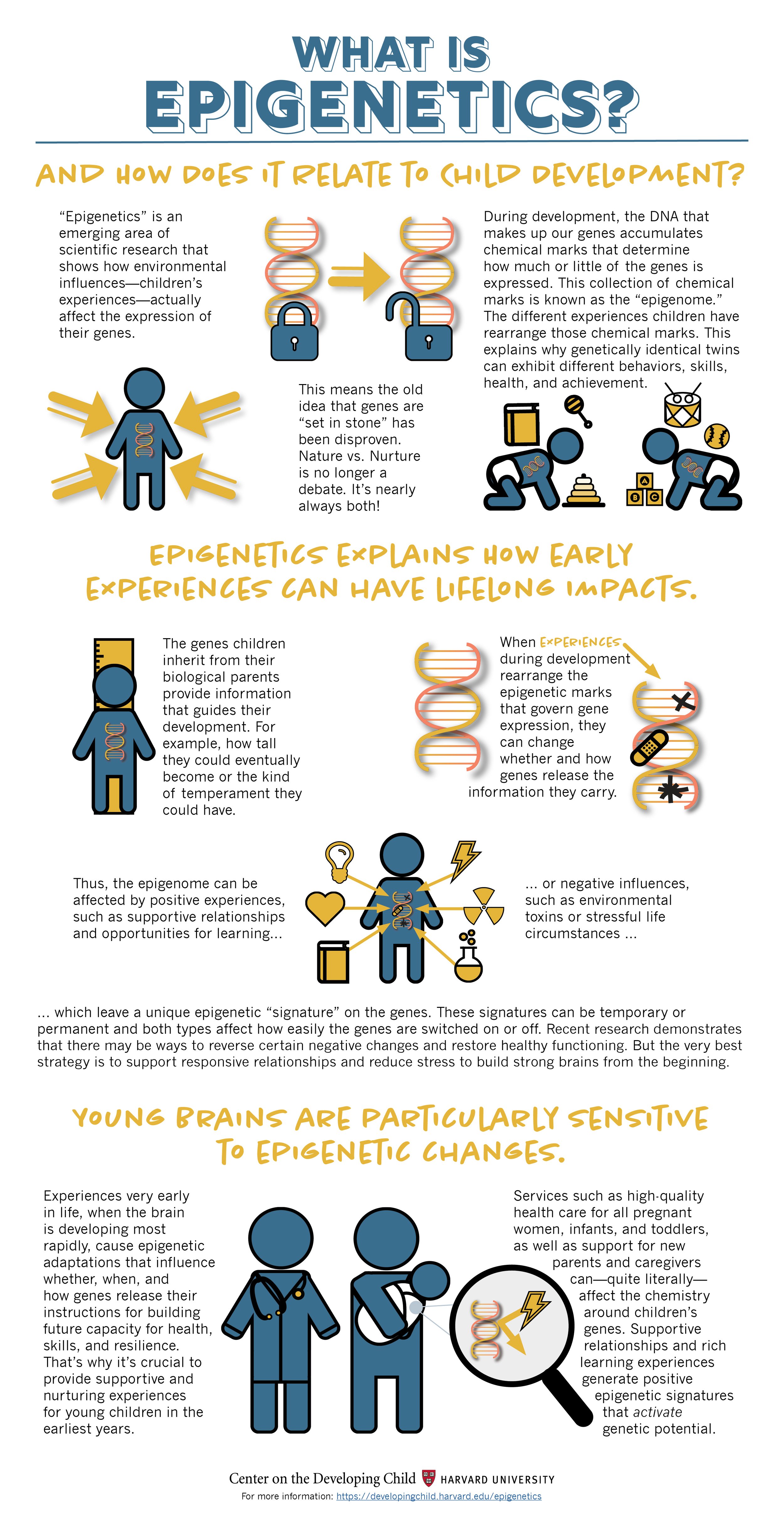What is Epigenetics?
We have learned that Cells are fundamental working units of every human being. All the instructions required to direct their activities are contained within the chemical deoxyribonucleic acid, also known as DNA.
DNA from humans is made up of approximately 3 billion nucleotide bases. There are four fundamental types of bases that comprise DNA – adenine, cytosine, guanine, and thymine, commonly abbreviated as A, C, G, and T, respectively.
The sequence, or the order, of the bases, is what determines our life instructions. Interestingly enough, our DNA sequence is mostly similar to that of a chimpanzee. Only a fraction of distinctively different sequences makes us human.
Within the 3 billion bases, there are about 20,000 genes. Genes are specific sequences of bases that provide instructions on how to make important proteins – complex molecules that trigger various biological actions to carry out life functions.
The process of epigenetics, where the readability, or expression, of genes, is modified without changing the DNA code itself. Tiny chemical tags are added to or removed from our DNA in response to changes in the environment in which we are living. These tags turn genes on or off, offering a way of adapting to changing conditions without inflicting a more permanent shift in our genomes.
In Biology of Belief, Dr. Bruce Lipton, Ph.D., outlines a new understanding of life-based on his pioneering research with stem cells at Stanford University. In his book, Dr. Lipton proclaims that genes do not control biology and that cellular perceptions of the environment are the primary factor in biological processes. Proteins are the staff of life, the physical gears that orchestrate the movements of biology. There are estimated to be about 100,000 different kinds of proteins in the human body. Today, medical students and practitioners are still operating under the assumption that genes, the blueprints that proteins are made from, are the primary factor in biological processes.
Ken further discusses with us our bodies efficiency. “It's about efficiency. So we build a body. Here's an interesting concept to think about it. A body. This disease is disordered. All right? There's an efficiency to that. The body is efficient at being disease. It's not efficient for being healthy. It's propagation. It's a signal that is being built over time. And so chronic disease or disordered chronic disease is something that didn't happen just today.”
He also shares with us the 3 Step Protocol that he harnesses every day and shares with us an incredible story of his dog and how the Healy device was able to help him.
For more on the Healy, device click here.
Addtional Reading:
Dr. Candace Pert (1946-2013) was an internationally recognized neuroscientist and pharmacologist who published over 250 research articles. She was a significant contributor to the emergence of Mind-Body Medicine as an area of legitimate scientific research in the 1980s, earning her the title of “The Mother of Psychoneuroimmunology”, and “The Goddess of Neuroscience” by her many fans.
______________________________
What connects emotion to physiology? How does the mind communicate with the body, the body with the brain?
______________________________

